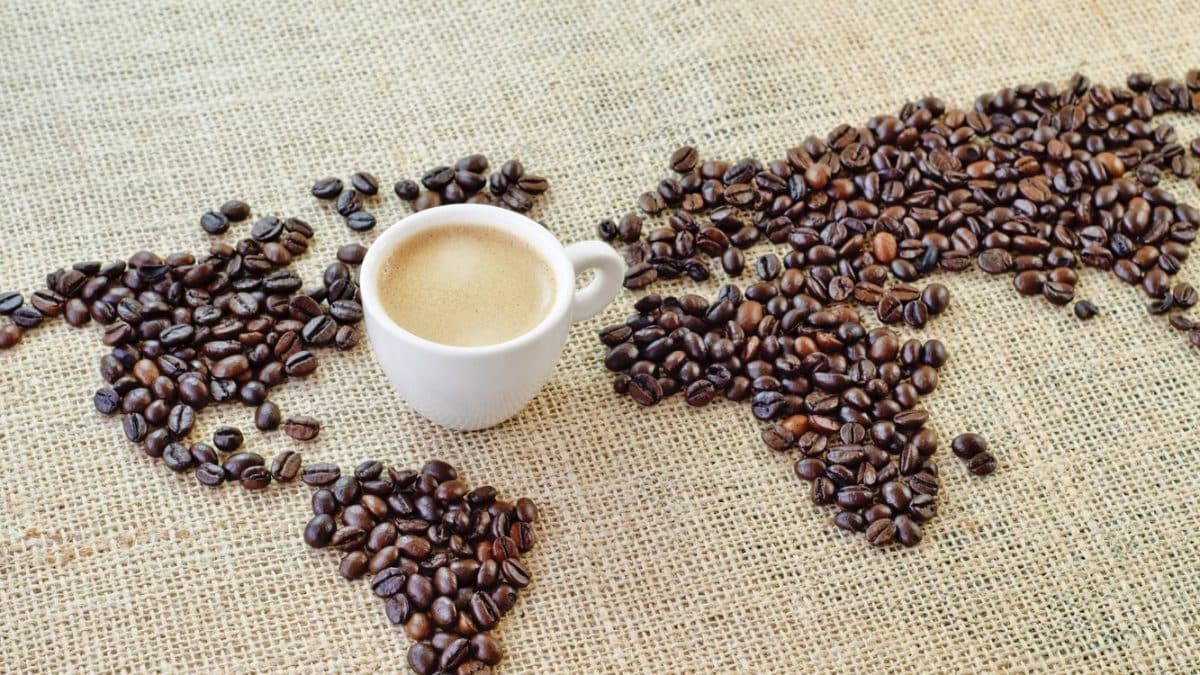
Coffee is one of the world's most beloved beverages, so powerful that its aroma can energize even those who don't enjoy drinking it: smell is one of the most powerful senses a human possesses, and the smell of coffee stimulates it like nothing else, traveling from the cerebral cortex to the areas where emotions and memory are generated. This is one of the reasons, but not the only one, why coffee is so highly regarded globally. Italy has certainly become one of the main homelands of coffee, but it's not the only one: over time, this precious and ancient energizing beverage has spread to many parts of the world, transforming itself into a different experience in each place. We take you on a tasteful journey to discover the most curious and unique coffees you can find around the world.
Café au Lait (France)
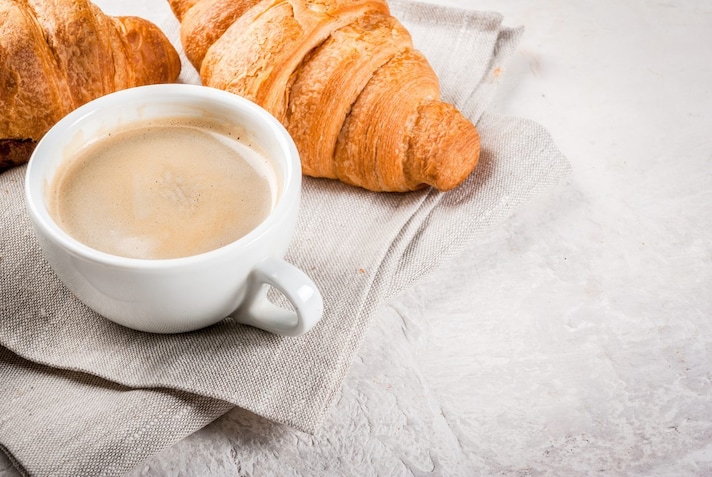
The French are as passionate about coffee as Italians, but they like to drink it in a more delicate version than the classic espresso. In France, the most popular is café au lait, literally "coffee with milk," but be careful because it is much more than a simple cup of coffee and cold milk: the preparation involves a process similar to cappuccino, that is, coffee (but prepared with a French press) combined with hot, steamed milk, but served without foam on top.
Viennese Coffee (Austria)
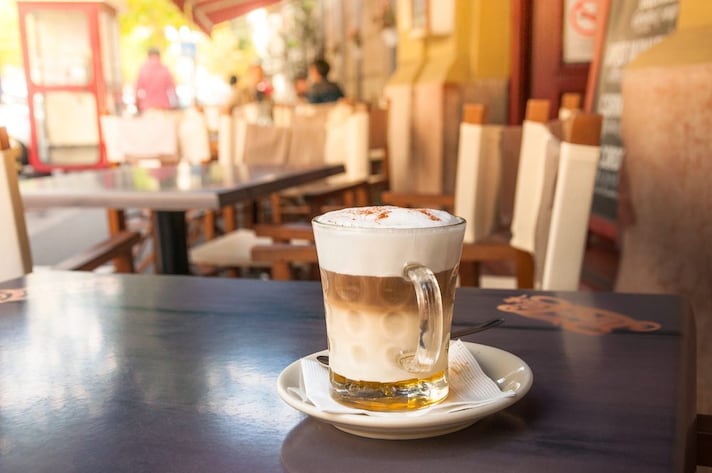
The history of coffee in Europe is closely linked to Austria, and Vienna in particular, a city crucial to the spread of coffee culture and even to the birth of its name. Even today, Viennese coffee is a true must, always accompanied by another local staple, the traditional Sacher torte. You can find Viennese coffee in several variations: the melange is an espresso with hot milk and milk foam on top; the eispänne is similar, but instead of milk, whipped cream is used. It is served in a tall glass and may be sprinkled with powdered sugar or cocoa powder. Remember, it is not stirred, but sipped slowly through the cream.
Pharisäer (Germany)
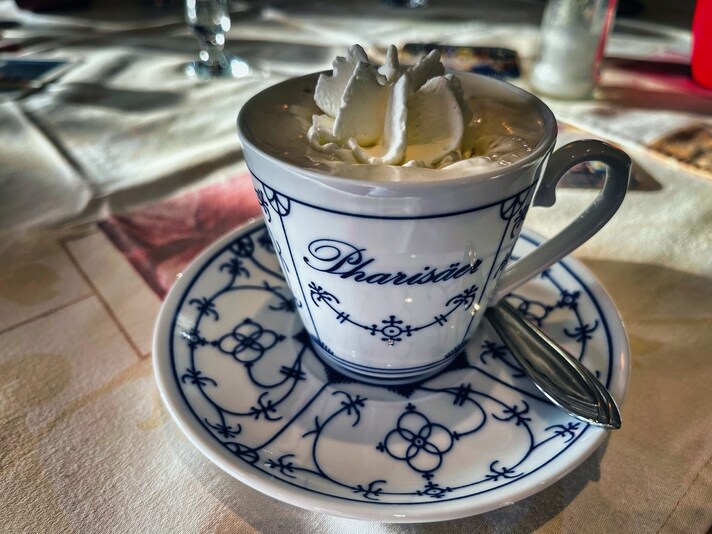
The Germans have added a unique twist to coffee, and the country's most beloved drink is a truly creative twist. It's called pharisäern and is a blend of long coffee spiked with rum, sweetened with whipped cream, and finished with a hint of cocoa. It's served in a special cup of the same name and can be served either with the rum mixed in directly or served separately, allowing everyone to adjust the desired spiciness.
Irish Coffee (Ireland)
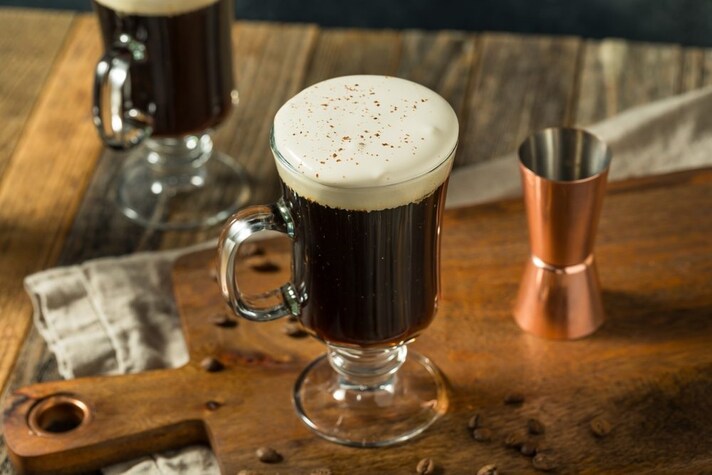
Speaking of caffè corretto: how could we not mention the most famous in Europe, so iconic that it has now spread throughout the world? It's Irish coffee, the celebrated Irish drink created in 1943 in Shannon Foynes Port, a key port in County Limerick. The original recipe calls for a base of filtered coffee prepared with a French press or a moka pot, then added with cane sugar and the ingredient that makes everything special, Irish whiskey, topped with a layer of homemade whipped cream.
Coffee Frappé (Greece)
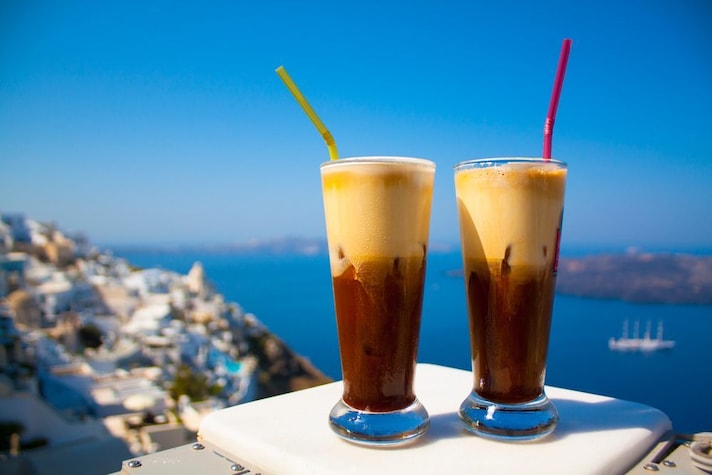
A typical example of hot Greek summers, the frappé coffee is popular throughout Greece and is a beloved refreshing drink. It may seem similar to a frappuccino, but it's actually not exactly the same: in this case, the drink is made with instant coffee, water, and sugar, shaken vigorously to create a frothy top, and then served over ice. There's also a version where milk is added, but in this case it's called a frapógalo.
Sweet Coffee (Spain)
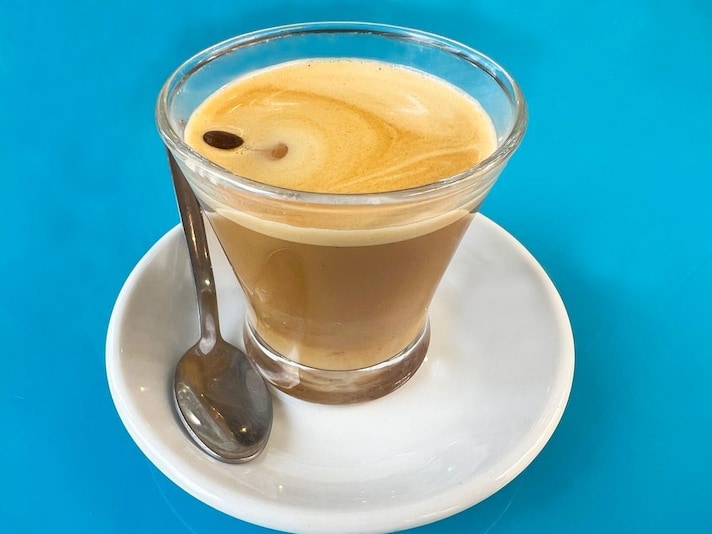
There's only one way to drink coffee in Spain: sweet, very sweet. There are countless coffee-based drinks, and they vary from region to region. One of the most famous is café con miel, an espresso with frothed milk and honey, spiced with cardamom, cinnamon, or even ginger. Also very popular is café bombón, originally from Valencia, an espresso poured over condensed milk.
Türk Kahvesi (Turkey)
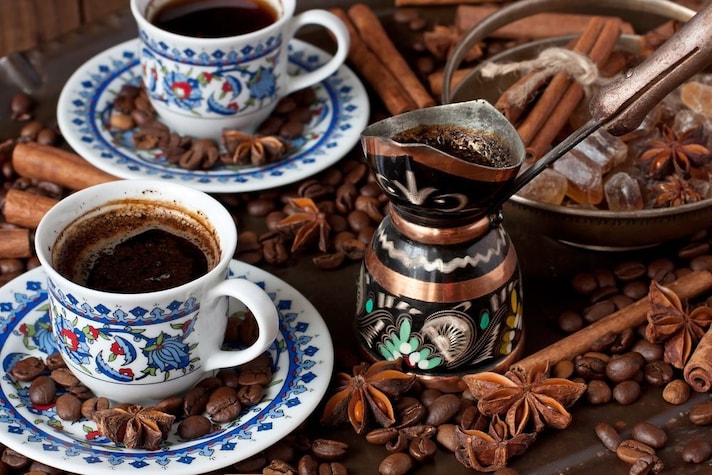
Speaking of sweet coffees, Turkey holds the title of one of the sweetest coffees in the world with its most famous traditional drink, türk kahvesi. Finely ground coffee beans are mixed with sugar just before the water begins to boil, a technique that makes the drink silky and incredibly sweet. The trick to knowing if it's made properly? It should have a natural foamy texture on top.
Mazagran (Algeria)
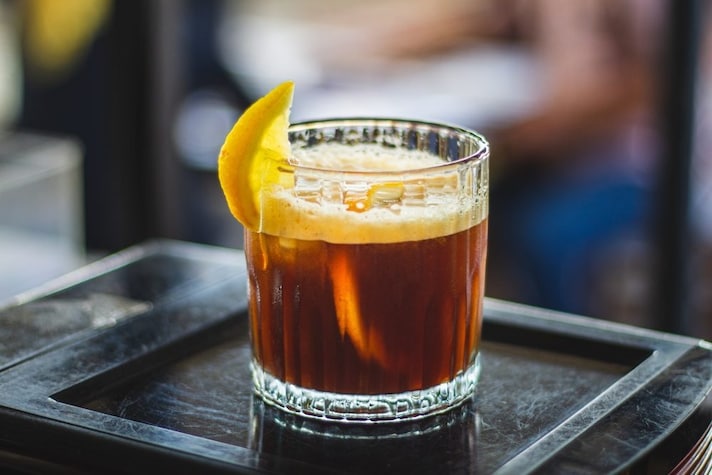
Middle Eastern countries have a strong coffee culture, which is why it's easy to find a different version in each country. Mazagran is a typical Algerian drink, named after the port city of the same name: it's a cold filtered coffee served with ice, a squeeze of lemon juice, and a lemon wedge in a glass. The drink can be sweetened or unsweetened, but either way, it's very refreshing.
RAF (Russia)
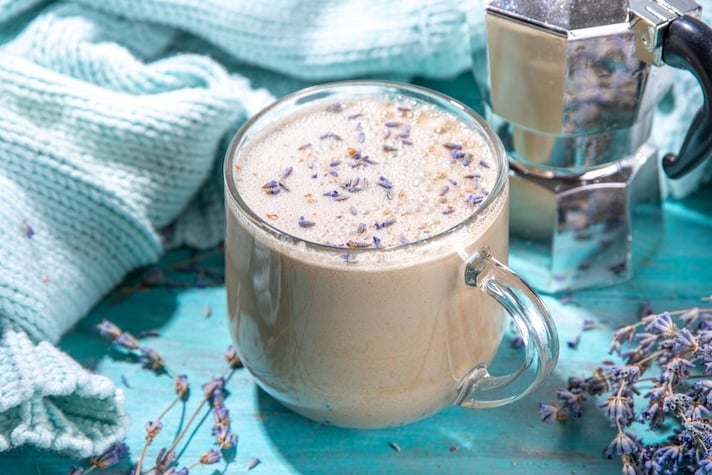
The most popular and beloved coffee drink in Russia is called raf, a very sweet, thick cream reminiscent of latte, but actually quite different. Created in a Moscow coffee shop (though some sources attribute its origins to St. Petersburg), it's made with an espresso base, to which sugar or vanilla syrup and cream are added, all of which are then whipped together to form a cream. Raf can also be found with alcohol or honey and aromatic seeds.
Vietnamese Coffee (Vietnam)
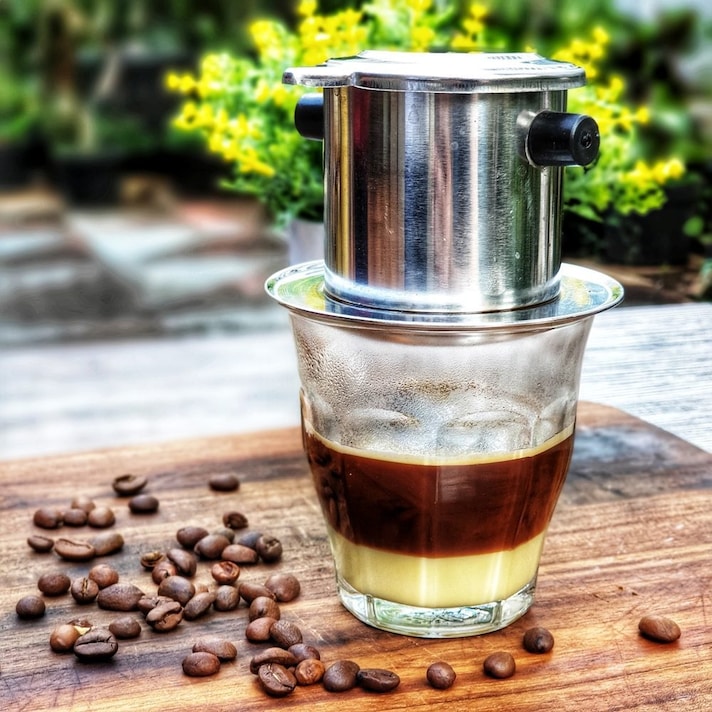
Vietnamese coffee is one of the most intensely flavored versions of the drink, due to the coffee variety used, the roasting method, and the unique preparation method: the beans used, those of the Robusta plant typical of Vietnam, contain double the caffeine found in Arabica beans. The beans are very bitter, slowly roasted with butter and sugar and then used in a special non-electric machine: Vietnamese coffee, in fact, is prepared with a phin filter, from which it drips very slowly directly into the cup. From this base, different variations are obtained depending on the ingredients added, but the most common are three: the hot one, in which the filtered coffee is mixed with sweet condensed milk; the iced one; and the yogurt one, also used as frozen cubes in place of ice.
Café de Olla (Mexico)
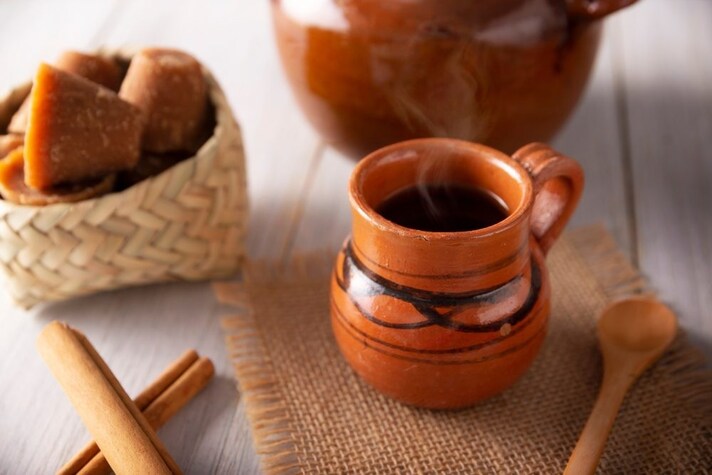
An integral part of Mexican gastronomic culture, café de olla is a very ancient traditional preparation: it is said to have originated during the Revolution, when women would give this drink to soldiers to wake them up and give them energy. It is a unique blend made from dark roast coffee combined with three spices (cloves, anise, and cinnamon) brewed in a clay pot called an "olla," and then served in clay cups enriched with piloncillo, an unrefined cane sugar with a smoky, caramelized flavor.
Dalgona Coffee (South Korea)
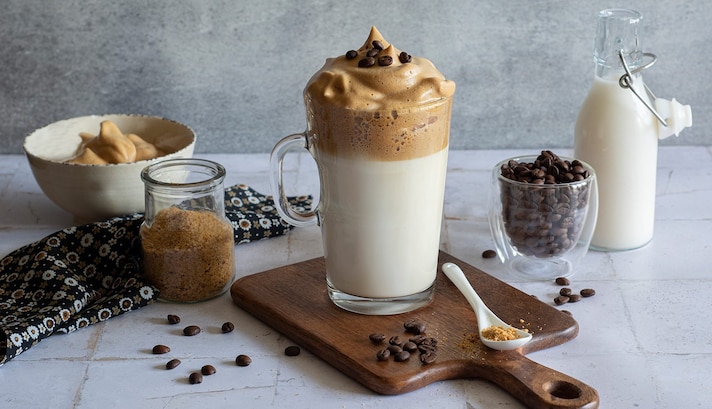
A unique drink from South Korea, known as the "upside-down cappuccino," has become a huge hit on social media. It's actually called Dalgona coffee and owes part of its popularity to its aesthetic beauty (but luckily, it's also delicious): it's a mix of instant coffee, or espresso powder, sugar, and hot water that, when mixed together, becomes a thick, frothy cream that garnishes a glass of hot or cold milk. It's sometimes garnished with ground coffee, cocoa, crushed biscuits, or honey.
Yuanyang (Hong Kong)
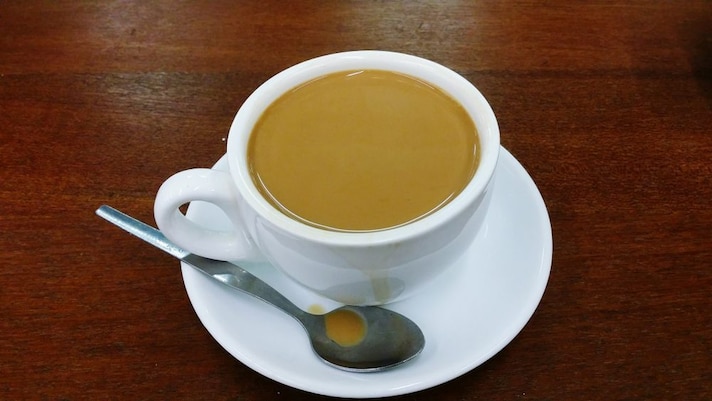
Also from the East, this time from Hong Kong, comes a very special drink called yuanyang in its homeland: brewed coffee is mixed with homemade milk tea, a special black tea mixed with condensed milk. This particular ingredient makes the drink particularly creamy and sweet.
Flat White (Australia)
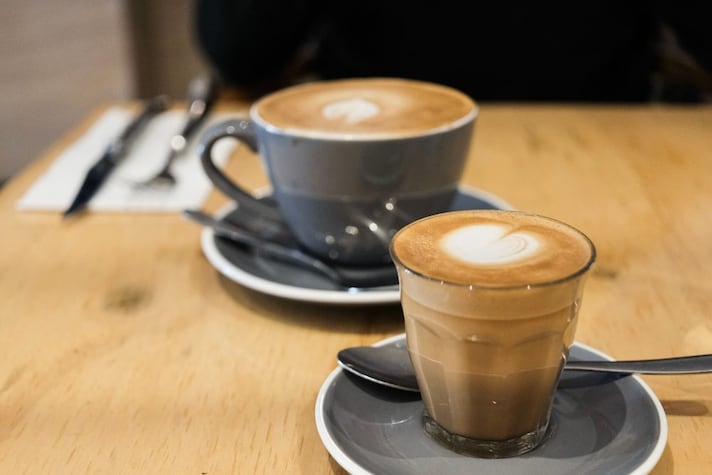
Imported as a staple from England but now typical of Australia and New Zealand, the flat white is a beloved coffee drink enjoyed in the morning and after meals. It's made by blending espresso with a small amount of steamed milk until it forms a glossy, velvety foam.
Cafezinho (Brazil)
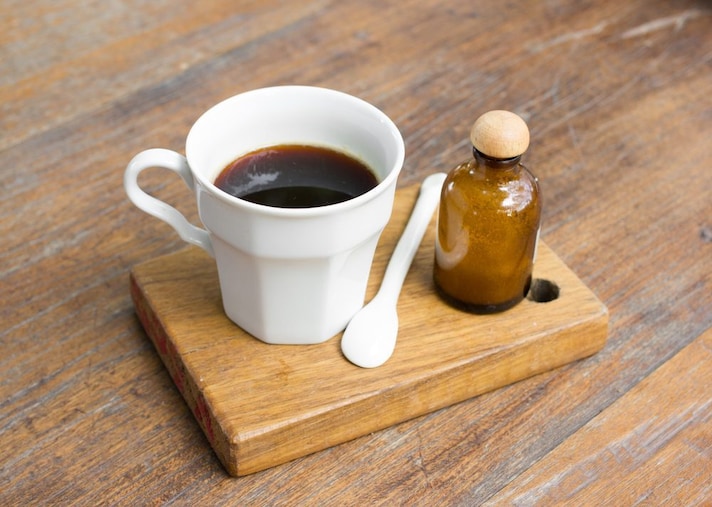
We end our journey in Brazil with a strong, intense drink, best enjoyed at a table in a relaxing moment: it's cafezinho, or "little coffee," a rich concoction with a slightly acidic, bitter flavor, best served slowly and slowly, but piping hot. It's usually served black and drunk neat, but some people also sweeten it with a teaspoon or two of sugar or a few drops of milk.
;Resize,width=767;)
